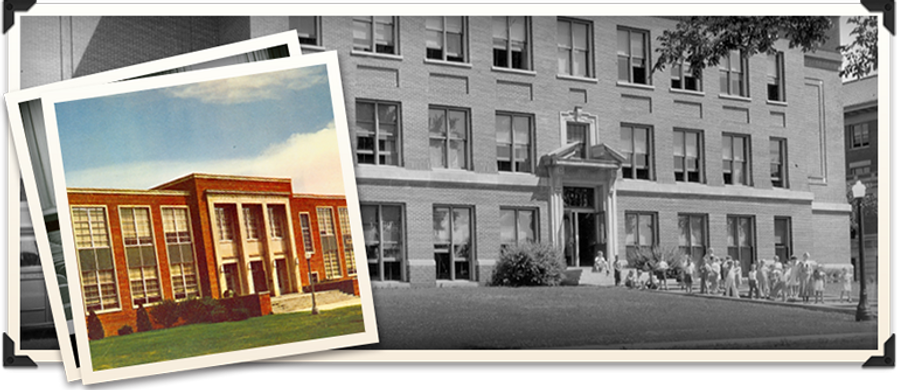
First Amendment Schools

Receive the latest news and updates in your inbox

Receive News and Updates
FIRST AMENDMENT SCHOOLS:
EDUCATING FOR FREEDOM AND RESPONSIBILITY
In 2005, Price Laboratory School was one of the five schools in the United States selected to receive the First Amendment Project Schools Award. These five schools joined a network of sixteen other schools previously selected to be in this project that is sponsored by the Association for Supervision and Curriculum Development (ASCD). First Amendment Schools (FAS) is a national reform initiative that is dedicated to the teaching and practice of the rights and responsibilities of freedom of speech, freedom of press, freedom of religion, freedom to petition, and freedom to assemble. First Amendment Schools are shaped by four guiding principles: democratic freedom, rights and responsibilities, community engagement, and active citizenship (Haynes, Chaltain, Ferguson, Hudson & Thomas, 2003).
Price Laboratory School’s Elementary Citizenship Program was a natural fit to integrate the First Amendment Schools’ initiative. More information can be found at www.firstamendmentschools.org.
The First Amendment in Action
Congress shall make no law respecting an establishment of religion or the free exercise therefore; or abridging the freedom of speech, or of the press; or the right of the people peaceably to assemble, and to petition the government for a redress of grievances. --First Amendment, United States Constitution
The Price Laboratory School Elementary Citizenship Program took each of these rights and showcased them as individual monthly themes. The monthly citizenship assemblies initially taught and reviewed each freedom. The teachers followed up and personalized the instruction in their classrooms.
The first theme, Freedom of Speech, is at the heart of the First Amendment in schools. Students need to be empowered to have a voice that is heard. Encouraging students to share their opinions in a safe classroom community is a philosophy and process not just a one-time lesson. Teachers need to believe this and practice it daily. Still, this freedom is controversial. Teachers are concerned that it means saying anything you want to say even if it is offensive. The First Amendment Schools’ (FAS) initiative emphasizes that with rights comes responsibilities. For example, students have the right to say they don’t want homework, but it has to be done in a respectful way. Conflict resolution skills were included so that students understood that it’s not so important what you debate, but how to debate.
The second theme, Freedom of Religion, was the quest of many of our forefathers. Schools have become paranoid about any talk of religion. Still, it is possible to teach about religion in ways that are constitutionally permissible and educationally sound (Haynes, Chaltain, Ferguson, Hudson & Thomas, 2003). Religion needs to be approached academically and not devotionally. As long as it pertains to a learning objective and remains neutral and fair, religion can be discussed in school. For example, students were free to talk about their religion in a heritage report assigned by the third grade teacher. Religion doesn’t need to be a taboo topic in school.
The third theme, Freedom of the Press, has been one of our country’s check and balance systems. The public has the right to know the truth about what is happening. School newspapers or other publications do have the right to print the truth keeping in mind the ethics of journalism. For example, a first and second grade classroom wrote a letter to the editor of a local newspaper stating their concerns about junk and garbage being dropped off at the local recycling centers. The manager of the recycling center was impressed with the students’ understanding of recycling and concern for their community.
The fourth theme, Freedom to Assemble, was taught through examples of Dr. Martin Luther King, Jr. who practiced peaceful assembly. The kindergarten class modeled this at an assembly. They had raised the concern of garbage on the playground. Through class discussions, they decided that having garbage cans outside could solve the problem. They also made signs and assembled to convey their ideas of stopping the litter on the playground. This highlights civic engagement even in the lower grades.
The fifth theme, Freedom to Petition, came alive for the fifth grade boys. They were faced with the embarrassing situation in their bathroom of no doors on the bathroom stalls. They voiced their concern to their classroom teacher who guided them in writing and presenting a petition. Two boys were selected to present their concerns to each of the elementary classrooms and solicit signatures for the petition. They were amazed to find that even the girls supported their concern. Finally, the petition was shared with the principal and action was taken to put doors back on the stalls. The students were reminded that with the right to have doors comes the responsibility of taking care of them.
After the First Amendment Rights were taught, Protecting the Right of Others was selected to pull them all together. This theme emphasized the civic responsibility that every citizen has to guard the rights of others. The fourth grade class had completed a curriculum written by the school guidance counselors entitled, Be A Buddy, Not A Bully! In order to apply what was learned, the elementary guidance counselor connected the fourth graders with buddies at a school for students with severe disabilities. Many of the buddies with severe disabilities couldn’t talk, write, or walk and this inhibited their basic freedoms. As citizens, these fourth grade students helped protect their rights. In return, they learned important lessons like the ones expressed by the following fourth grade student at the citizenship assembly:
You shouldn’t make fun of someone because they have a disability or different qualities. You have to help them. This experience helped me learn about disabilities. As a leader, I had to make sure that no one made fun of them, called them names, or made them sad.
